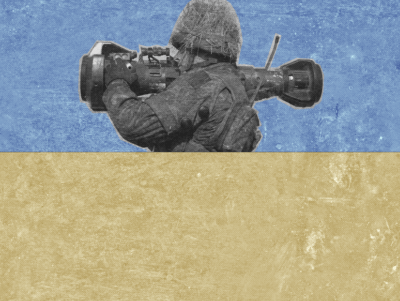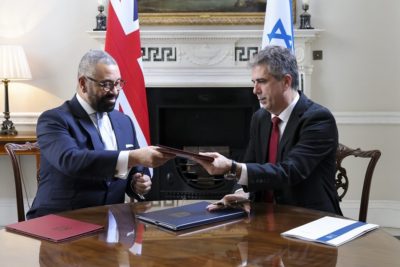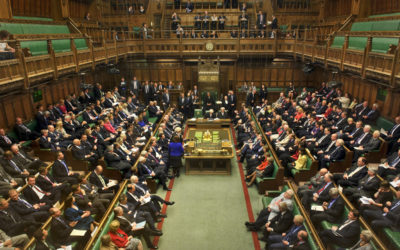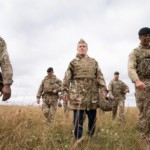Thinking through ‘Lethal Aid’

The term “lethal aid” has come to the fore of public discourse since Russia’s brutal invasion of Ukraine began on 24th February. Unable to intervene directly for fear of an escalation into a wider conflict between nuclear powers, the NATO and non-NATO nations which back Ukraine settled for channeling arms and military equipment to the beleaguered country’s military forces. Yet, British, US and other NATO member support for the Ukrainian armed forces predates the current invasion, stretching back to the aftermath of Russia’s annexation of Crimea in 2014. As a result, Ukraine has, in some ways, become the epicenter of a proxy-war between certain NATO countries and Russia over the past eight years. What has changed is the nature of that support, morphing from the training of the armed forces to providing an ever increasing arsenal of weapons. ForcesWatch took a brief look at the notion of lethal aid, the varied nature of its form, and what its potential implications are for the future.
UK leading the logistical support for weapons to Ukraine.
The British government has certainly tried to position itself as a key provider of lethal aid to the Ukrainian state since the invasion. As early as 23 February – a day before Russian forces crossed the border – Boris Johnson was promising packages of support which would include ‘lethal aid in the form of defensive weapons and non-lethal aid’. Defence Secretary Ben Wallace subsequently organised a donor conference in conjunction with allied nations and tolda Parliament in early March that Britain would be the first European country to supply lethal aid:
‘I can update the House that, as of today, we have delivered 3,615 NLAWs and continue to deliver more. We will shortly be starting the delivery of a small consignment of anti-tank javelin missiles as well’.
Seeking to assuage concerns about nuclear escalation, he then explained:
‘I want to assure the House that everything we do is bound by the decision to supply defensive systems and is calibrated not to escalate to a strategic level’.
On the 24th March, Johnson announced another uplift of military aid would be outlined at the forthcoming G7 and NATO summit. According to a Number 10 press release:
‘The measures announced today include 6,000 missiles, consisting of anti-tank and high explosive weapons, and £25 million in financial backing for the Ukrainian military’.
Subsequently on 31st March, Ben Wallace convened another conference to discuss further military aid to the country and the Government claimed that ‘over 4,000 NLAWs and Javelin anti-tank systems’ had been delivered to the Ukrainian military, alongside a commitment ‘to send Starstreak air defence systems and 6,000 new anti-tank and high explosive missiles’. Hours later, on 1st April, The Times carried a report that a British Starstreak had already been used to bring down a Russian military aircraft.
And the question of lethal aid has proven a seductive one far beyond national governments and alliances like NATO. To the point that even celebrities have chosen to intervene with (arguably bizarre) suggestions about how to provision Ukrainian resistance to Russian invasion. On 1st April, Hollywood actor Sean Penn was reported as lobbying for billionaire’s to step in and purchase fighter jets for Ukraine. Though, to his credit, Penn did not go as far as eccentric tech billionaire Elon Musk, who challenged Vladimir Putin to a dual on Twitter (Musk has also provided the Ukrainian’s access to SpaceX’s satellite-internet system Starlink).
Considerations
If discourse on social media is any gauge, the question of military aid to the Ukrainians has engaged a great number of people. There is an understandable horror at the Russian invasion, intensified by recent accusations of war crimes against Ukrainian civilians. But there has been little discussion around the potential outcomes of military aid and virtually nothing about what caveats and rules should be applied to such an undertaking.
A list of questions to scholars for a 2017 event at the University of North Carolina can serve as a starting point. It attempts to set out the matters of interest regarding military aid to fragile states – a designation that could apply to Ukraine given the current invasion and the conflict with sepratists in the east of the country over the past eight years . While the questions are not exhaustive, they form a useful introduction to the issues at hand. Participants were asked to consider, among other matters:
– The effects of arms transfers to warring parties on post-conflict peacebuilding, prospects for democratisation, and human security after war termination;
– The effectiveness of donor state policies to mitigate against the misuse or diversion of weapons transfers and lessen adverse impacts on societal welfare; and
– The effects of military aid provided to a state’s armed forces during security and governance transitions.
Any or all of these questions are useful to us when we try to assess the possible long-term impacts of providing weapons to the Ukrainian state and its armed forces. They are equally as important in judging the longer-term support the British Army has provided in training Ukrainian soldiers since 2015, when the Ukrainian armed forces were in a state of transition after absorbing the volunteer battalions that had formed to fight Russian-backed forces in the break-away regions of Donetsk and Luhansk.
Critical questions include: what impacts will UK weapons have on human rights once the war ends? Does the donor state (in this case, the UK) have policies to mitigate against diversion or misuse; and what plans are in place to “lessen adverse effects” of arms “on societal welfare”. What we should be discussing here is, in short, the potential for “blowback”.
Blowback
While not a case of direct military aid, but rather of seizure of military aid by enemy forces, the mass use of US and US-linked military equipment by both ISIS and the Taliban hints at the dangers of advanced weaponry migrating from one group to another. This is an example of what is popularly termed “blowback”. Blowback is a concept developed by the CIA but popularised in foreign policy circles by the political scientist Chalmers Johnson. Johnson described it as follows:
‘…another way of saying that a nation reaps what it sows… that what comes around goes around’.
There are numerous historical examples of direct lethal aid creating varying degrees of blowback. Signally, Operation Cyclone, the US and UK’s prorgam of training, support and provision of stinger missiles to the jihadist anti-Soviet Mujahadeen in Afghanistan – elements of which came to form the basis of both the Taliban and Al Qaeda. This is significant because Stingers are among the weapons systems sent by the UK to Ukraine as part of an entire suite of military equipment. And these appear to have been delivered directly into the hands of dangerous elements within the Ukrainian armed forces. Not least the Azov Regiment (formerly Battalion), a unit with openly Neo-Nazi views that was integrated into the National Guard after starting out as a volunteer militia fighting Russian separatists in 2014. News reports already show that, unsurprisingly, British made weapons have found there way to Azov fighters – despite MoD assurances that the weapons are not destined for the regiment.
There must be a question about the role such a unit – and it is not the only far-right group operating within the Ukrainian military or Ukrainian society more broadly – could play in post-war politics. Particularly given it is armed with British weapons and, quite possibly, has received British military training. Following Russia’s annexation of Crimea in 2014, the MoD has been training and supporting the Ukrainian armed forces under a program known as Operation Orbital. Whilst some of this support was explicitly linked to fighting Russian-backed seperatists, Orbital was suspended before Vladimir Putin ordered his troops to invade in February.
Estimates suggest more than 22,000 Ukrainian troops have received some form of training from Britain’s armed forces and there have been examples where this may have included members of far right organisations. Researchers at George Washington University’s Institute for European, Russian and Eurasian Studies suggest that a member of Centuria, an offshoot of Azov, attended Sandhurst, the British Army’s officer training facility in Hampshire. It is thought the officer graduated in 2020.
The Azov movement – of which the National Guard regiment is but one facet – is the envy of far-right movements across the world. This is where the possibility of blowback comes to the fore. In 2018, Hope Not Hate reported that Britons had travelled to the Ukraine to fight with Azov and that the movement was actively recruiting far-right activists from the UK. Canadian journalist Michael Colborne, an expert on far-right groups, claims that Azov stopped this kind of recruitment during the Covid-19 pandemic but it serves as a warning. Equally, the repercussions for minority groups in Ukraine – specifically Roma and LGBTQI+ communities – need to be taken into account. Four years ago, veterans of the Azov movement attacked a Roma settlement in Kyiv with axes and hammers. It was not an isolated incident.
Caveats
In brief, the appeal of providing lethal aid is understandable. The optics of being seen to act in the face of a brutal war are certainly powerful and go some way to satisfying a concerned British public. But that cannot be the only concern here. Weaponry doesn’t evaporate once hostilities end, which every onlooker must hope will be sooner rather than later. And there are a number of important examples of Western military equipment falling into the hands of objectively dangerous and illiberal forces. The difference with Ukraine is that rather than advanced military equipment being captured and put to use by ISIS or the Taliban, weapons could be finding their way to Neo-Nazi’s and far-right fighters in official military uniform.
Only time will tell whether, in a post-war Ukraine, forces of this kind simply hand UK-sourced missiles back into the armoury, or put them to use advancing their own influence in a country already devastated by Russian invasion and occupation. It follows that deliveries of lethal aid must be carefully caveated and highly conditional, and it is not at all clear to what extent this is the case in Ukraine.
See more: human rights, security, UK Parliament, defence & foreign policy
Like what you read?
> Sign up for our newsletter or blog notifications
> Support our work – from just £2 a month









